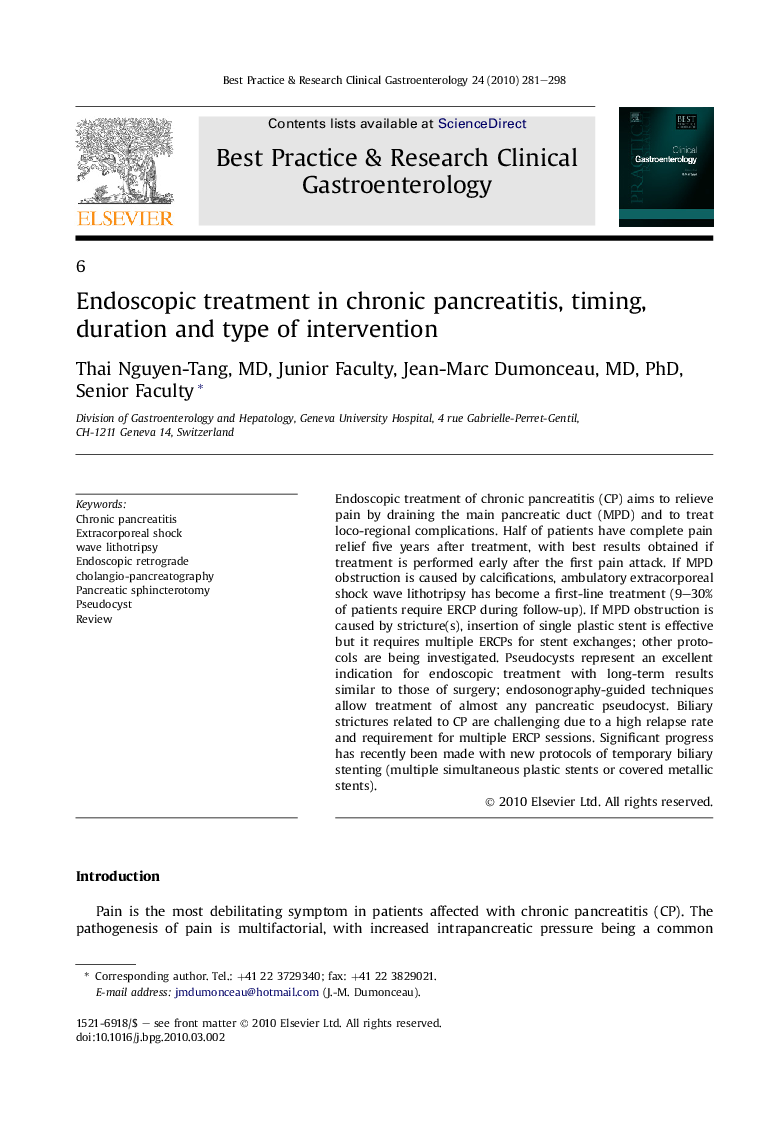| Article ID | Journal | Published Year | Pages | File Type |
|---|---|---|---|---|
| 3254310 | Best Practice & Research Clinical Gastroenterology | 2010 | 18 Pages |
Endoscopic treatment of chronic pancreatitis (CP) aims to relieve pain by draining the main pancreatic duct (MPD) and to treat loco-regional complications. Half of patients have complete pain relief five years after treatment, with best results obtained if treatment is performed early after the first pain attack. If MPD obstruction is caused by calcifications, ambulatory extracorporeal shock wave lithotripsy has become a first-line treatment (9–30% of patients require ERCP during follow-up). If MPD obstruction is caused by stricture(s), insertion of single plastic stent is effective but it requires multiple ERCPs for stent exchanges; other protocols are being investigated. Pseudocysts represent an excellent indication for endoscopic treatment with long-term results similar to those of surgery; endosonography-guided techniques allow treatment of almost any pancreatic pseudocyst. Biliary strictures related to CP are challenging due to a high relapse rate and requirement for multiple ERCP sessions. Significant progress has recently been made with new protocols of temporary biliary stenting (multiple simultaneous plastic stents or covered metallic stents).
